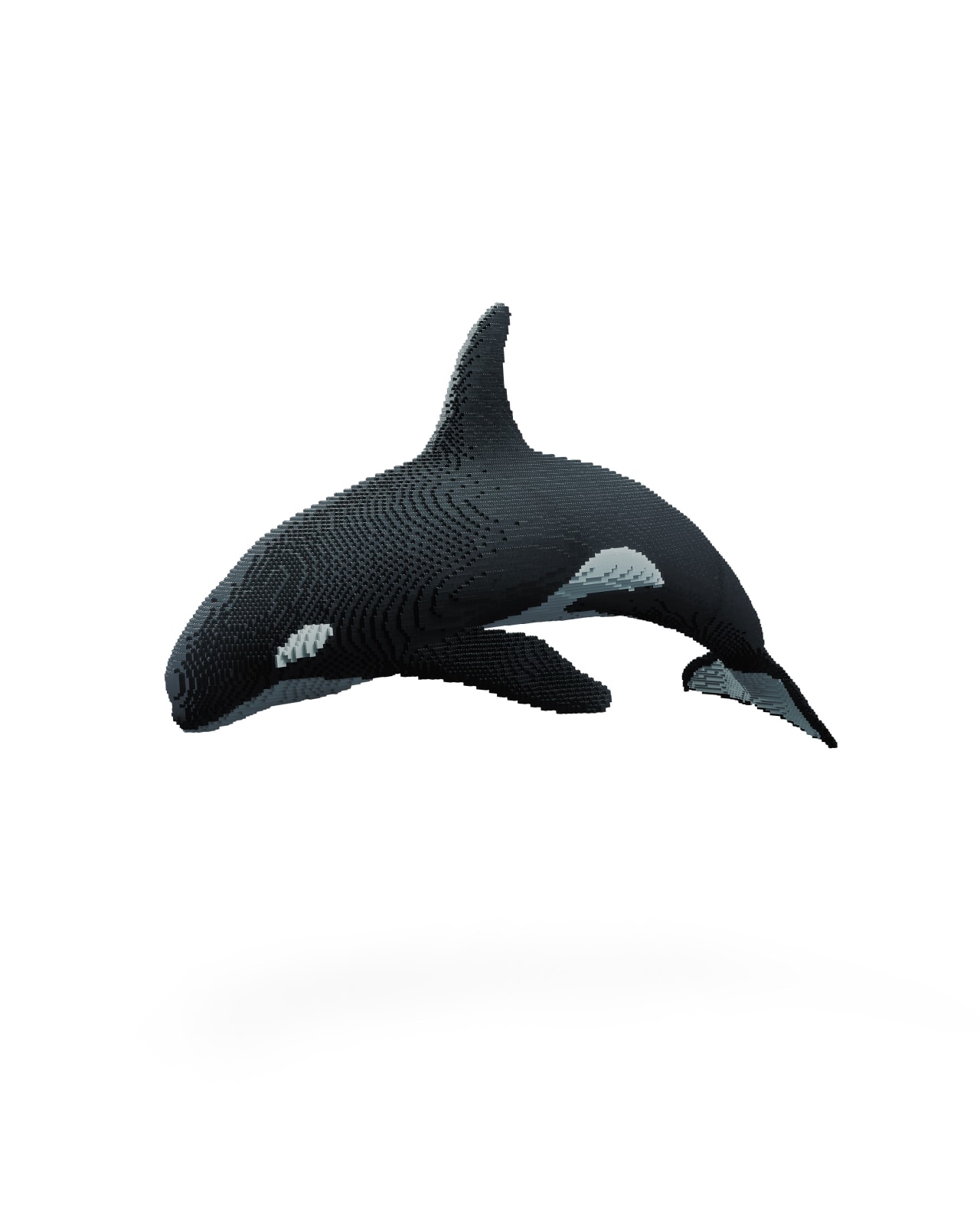Dean West & Nathan Sawaya
Orca, 2019
Series: Perniciem
archival pigment print
96.5 x 120.7 cm
38 x 47 1/2 in
38 x 47 1/2 in
Edition of 9
121.9 x 152.4 cm
48 x 60 in
48 x 60 in
Edition of 6
147.3 x 184.2 cm
58 x 72 1/2 in
58 x 72 1/2 in
Edition of 1
The Killer Whale, exceptionally bright, emotional and sociable ocean giants with whom humans have had a complicated relationship with for quite some time, are actually the world’s largest dolphin species....
The Killer Whale, exceptionally bright, emotional and sociable ocean giants with whom humans have had a complicated relationship with for quite some time, are actually the world’s largest dolphin species. The distinguishably black and white Orca is a powerful and colossal apex predator that is omnipresent in every one of the earth’s oceans. Their complex social bonds have made them one of the most fascinating, mysterious and subsequently lovable marine mammals today. Orca societal structures and familial bonds compete only with those of humans, other higher primates and elephants. They have shown the ability to feel grief, frustration, excitement and exhibit a strong emotional capacity not only amongst each other but also in their interactions with humans. Especially in captivity, which has long been a subject of extreme controversy due to their innate and instinctual needs and behaviors.
Although their conservation status on the IUCN Red List is Data Deficient because of a technicality that two killer whale types may be separate species, it is important to note that there are still several local populations that are considered to be threatened or endangered. The Southern Resident Killer Whales which live in the waters surrounding British Columbia and Washington State were placed on the U.S. Endangered Species Lists in 2005 and still remain. At one point numbering between 200-250, they are now down to just 75; the lowest seen since the mid-1980s. These animals are indeed still threatened and being killed off by a severe depletion of their prey species, major oil-spills, habitat disturbance and marine pollution.
Although their conservation status on the IUCN Red List is Data Deficient because of a technicality that two killer whale types may be separate species, it is important to note that there are still several local populations that are considered to be threatened or endangered. The Southern Resident Killer Whales which live in the waters surrounding British Columbia and Washington State were placed on the U.S. Endangered Species Lists in 2005 and still remain. At one point numbering between 200-250, they are now down to just 75; the lowest seen since the mid-1980s. These animals are indeed still threatened and being killed off by a severe depletion of their prey species, major oil-spills, habitat disturbance and marine pollution.
Join our mailing list
* denotes required fields
We will process the personal data you have supplied in accordance with our privacy policy (available on request). You can unsubscribe or change your preferences at any time by clicking the link in our emails.









